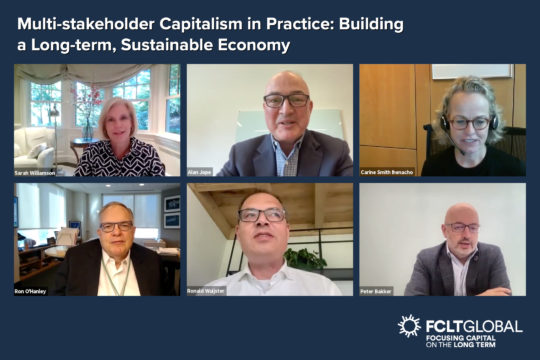By Nur Robleh and Ariel Babcock
Companies today are faced with wide-ranging expectations that extend beyond maximizing near-term shareholder return. Those expectations encompass a wider list of stakeholders – including the communities in which they operate – whose partnership and support are required for the company to create value in a resilient, responsible way over the long term. In turn, companies are seeing the benefit of creating broader and longer-term connections by investing in communities appropriately.
Companies know they depend on their communities, as they provide the crucial supplies of labor, infrastructure, and customers that determine the extent to which companies can fulfill their corporate purpose. Moreover, communities have grown to expect more from companies. Results from the 2022 Edelman Trust Barometer demonstrate that businesses garner more societal trust than governments; however, their performance in addressing issues—such as climate change and workforce-reskilling—is viewed as inadequate by the wider public. While companies acknowledge the communities that they serve are vital, it is not yet clear how they can strategically invest in those communities with a long-term focus.
Traditional models of corporate charity aside, are new methods required?
As part of FCLTGlobal’s research on putting a multi-stakeholder approach into practice, we recently hosted subject matter experts from members and other organizations to share perspectives on new tools for community investment that better support long-term value creation. Among the representatives, there was agreement that community investments are an integral component of a company’s operations. There were four major themes that were emphasized over the course of the discussion:
- Profit and social purpose are not mutually exclusive. In fact, marrying the two in a multi-stakeholder approach can generate value for the communities in which companies operate.
- Having employees engaged in community investment initiatives can produce a workforce that is more engaged with the company’s purpose, which may lead to higher retention rates and productivity.
- Community investment initiatives might be an effective risk management approach to build customer satisfaction and enhance a company’s social license to operate.
- Investors tend to be reticent about significant corporate community investments that stray away from value creation for shareholders.Unfocused-piecemeal community investments are generally not as effective as company-context-oriented investments. Ensuring there is an alignment between community investments and corporate purpose seems to be the most effective way to generate value for communities and its other stakeholders over time.
Placing shares in a trust or a foundation could drive better alignment, with proceeds from dividends used to fund community projects. Such a structure would have implications for other shareholders, of course, including dilution. This dilution would likely be marginal in comparison with typical stock price volatility and has the potential to align stakeholder success with the company’s success.
Over the coming months, FCLTGlobal will build on recently published work on Multi-Stakeholder Strategies by tackling the questions of “What would it take for existing investors to support significant corporate capital allocations to communities?” and “How would that translate into the company’s profile as a responsible ESG investment?”
If you have any thoughts on the topic of multi-stakeholder capitalism and its relevance for community investments, please contact [email protected].



